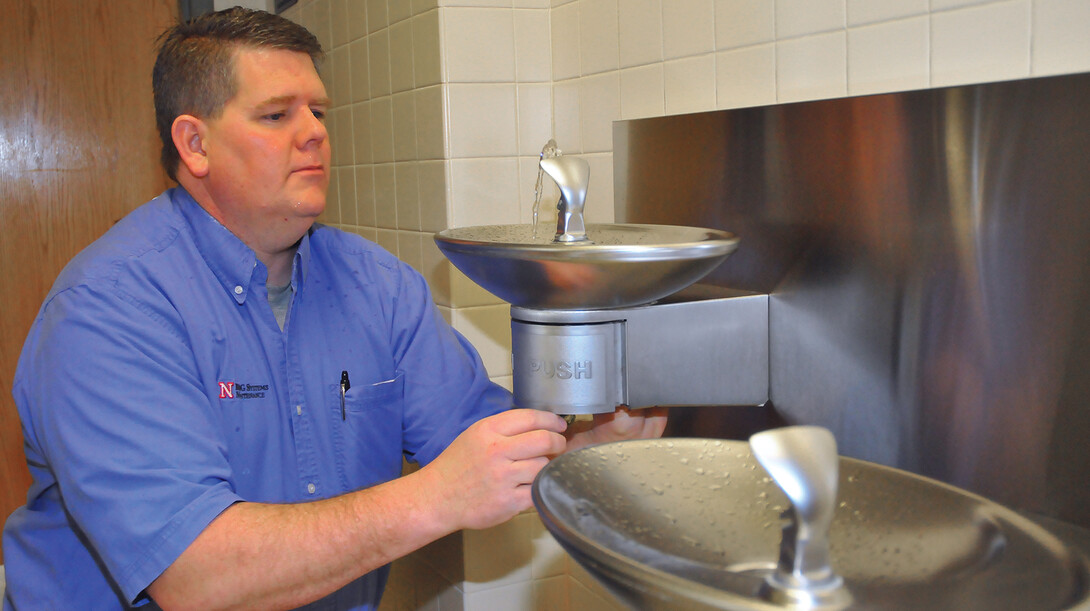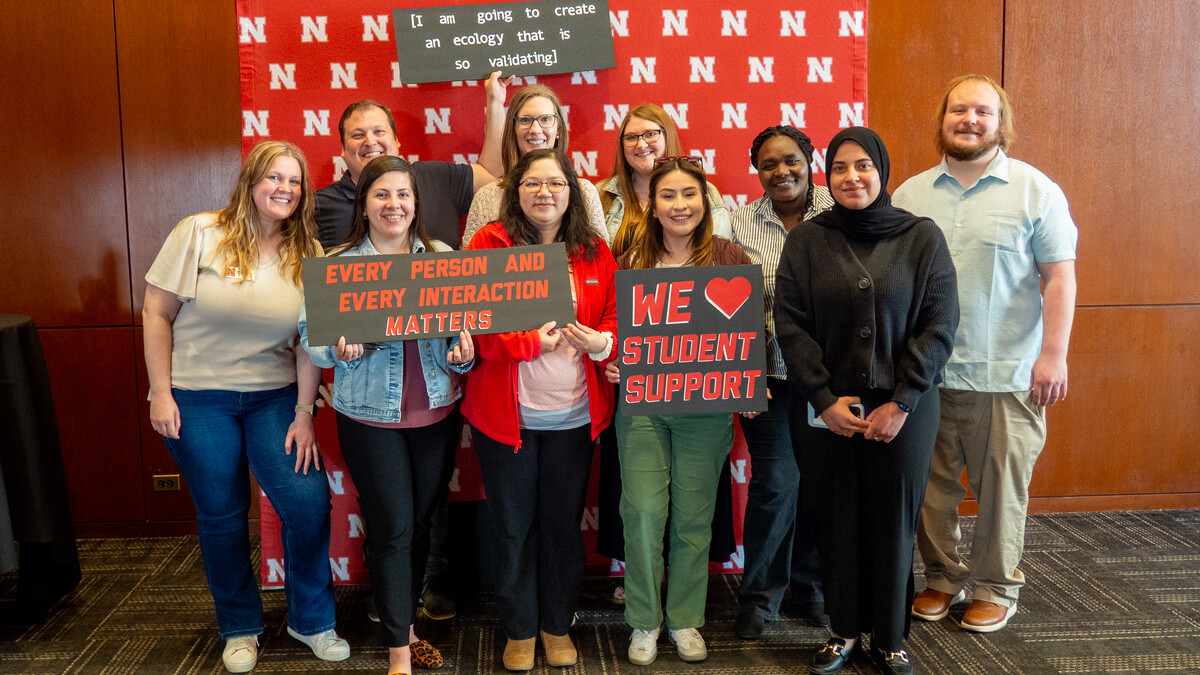
A class project to impact the common good is flowing into an upgrade of the worst water fountains on City Campus.
During the fall semester, students in an honors course led by Damien Pfister, assistant professor of communication studies, generated projects that would result in change on campus. One of those groups — which included Bryce Byman, Brady Caverzagie, Jacob Kingsley and Zachary McClintock — drilled into a review of campus water fountains.
The students rated the fountains on five categories and posted the results to a blog. To draw attention to the project, the students placed flyers by the best and worst water fountains, providing a ranking and a URL to the group’s website. And, when the results percolated across Chris Walsh’s desk, the associate director of building systems maintenance for Facilities Management and Planning, called for a meeting with the students.
“We saw this as an opportunity to engage with students and make the campus a better place,” Walsh said. “Honestly, we thought it was a neat project. They showed a lot of initiative and did a nice job with the blog and getting word out about the results.”
During the meeting, Walsh explained that only four of the bottom 10 fountains are located in academic buildings — which are the responsibility of building systems maintenance employees. The conversation ebbed into how to use the survey to make a greater impact, eventually focusing on issues related to fountain stream quality.
“By looking at stream quality — how much water comes out and how it flows from the fountain — we were able to get more bang out of the resources available,” Walsh said. “So, instead of just those bottom four, we expanded to a commitment that will a budget of $10,000 to address 35 fountains across City Campus.”
Work on the fountains started the week of Feb. 9 and is scheduled to finish March 6. Russ Kraft, a preventative maintenance technician with BSM, will complete initial assessments and repairs of the fountains.
“I’ll be going through each of the 35 fully, fixing bubblers and making adjustments as needed to get the fountains up to standard,” Kraft said.
The survey has also stirred UNL’s Custodial Services into a review of their cleaning program for campus fountains. The workers are also responsible for reporting fix orders with BSM as needed.
“We are making sure all the fountains get a good, regular cleaning,” said Estelle DeJonge, interim assistant director with custodial services. “Our goal is to make the water fountains look as good as we possibly can.”
Both efforts are an example of how Facilities Management and Planning is shifting from reactive to preventative services.
“We are in a transition period in terms of maintenance policy here on campus,” Walsh said. “Water fountain repair is an area we had not addressed in terms of our (preventative maintenance) plan. This student survey helped us identify that and make a positive change.”
Walsh said when the 35 fountain repairs are complete, he plans to meet again with the student group from Pfister’s class.
“This is an important project for us,” Walsh said. “It’s a simple way to help improve campus aesthetics and the student experience, which plays into helping meet UNL’s enrollment goals.”







